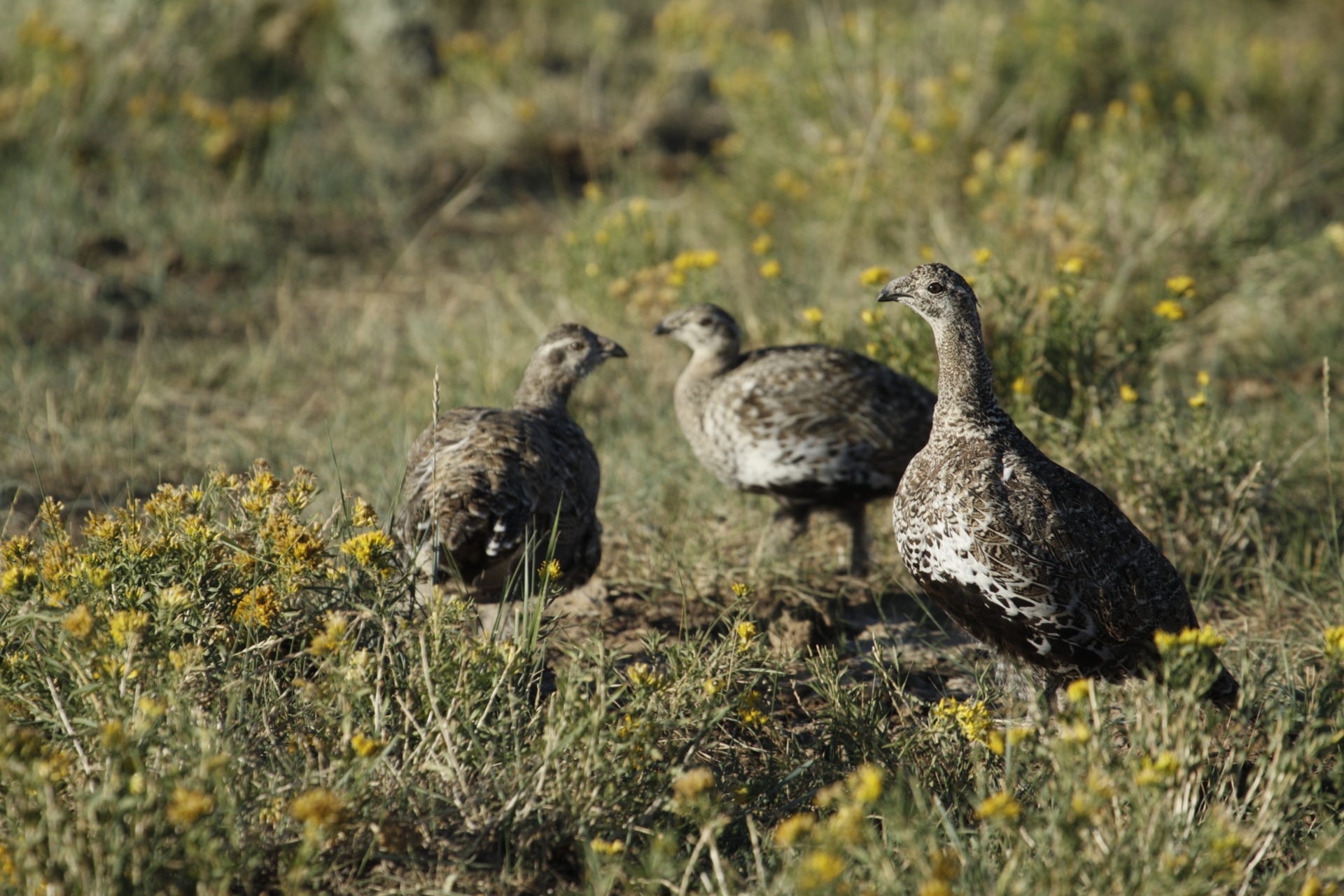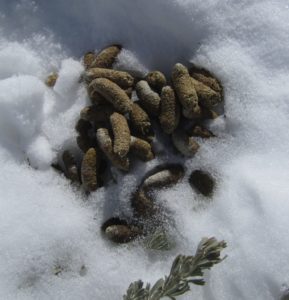
The number of female sage-grouse in an area typically determines a population’s ability to increase over time. Photo: Brett Walker/CPW
Using a method never before attempted on sage-grouse, wildlife researchers can now more accurately estimate greater sage-grouse abundance than ever before, an important milestone in ongoing efforts to conserve the iconic species.
In a cooperative study with Colorado Parks and Wildlife and the U.S. Geological Survey during the winters of 2012 and 2013, Colorado State University researchers used the new method in an attempt to accurately determine the number of greater sage-grouse in the Parachute-Piceance-Roan population, a geographically isolated population in Garfield and Rio Blanco counties on the edge of the species’ range in western Colorado.
The research showed the population of greater sage-grouse in the Parachute-Piceance-Roan doubled in size during the period of the study, from 335 the first winter to 745 birds the next.
Jessica Shyvers conducted this research for her doctoral dissertation at CSU. The study was published Aug. 9 in IBIS, the journal of the British Ornithologists’ Union.
Known as “non-invasive, genetic mark-recapture analysis,” the method includes the collection of grouse fecal droppings in the snow, DNA analysis to detect and identify individual birds, and mark-recapture analysis to estimate abundance. Because it does not require capturing or marking birds with radio-collars, it’s easier on the birds and enhances research efficiency.
“Researchers across the world have used the method to estimate numbers for a variety of wildlife species, but until now, it wasn’t clear whether using this method was feasible for sage-grouse,” said Brett Walker, an avian researcher for CPW. “This study confirms it is feasible, and that opens up new avenues for sage-grouse research and conservation in the future.”
Shyvers, the lead author of the study, added the research is the first to show that these methods are a reliable alternative for estimating greater sage-grouse numbers in a non-invasive way.
“It is cost-prohibitive, so we can’t use it everywhere all the time but we are glad to have it as an alternative to use when possible,” she said.
Alternative to counting

Colorado Parks and Wildlife has traditionally used the lek-count index, the observation and counting of male sage-grouse during spring on their traditional breeding grounds, called leks. Using this index, researchers successfully tracked the direction and magnitude of the change in population size between years. But it did not accurately estimate actual male abundance in either year.
“Lek counts have been used since the 1950s,” said Walker. “They’re useful for tracking changes in male sage-grouse abundance and distribution over large areas and over time, but they’re not as good if you need accurate estimates of abundance at certain points in time, and especially if you need estimates for females, which are key to healthy populations in this species.”
Walker says more rigorous methods are needed for obtaining precise and accurate baseline abundance estimates, especially for isolated sage-grouse populations subject to changing habitat and land use, as is the case in the Parachute-Piceance-Roan.
“This is a terrific new tool for monitoring specific sage-grouse populations we need to know more about,” he said. “We’ve shown it works with sage-grouse. Ultimately, that is a positive for the future conservation and management of this and other grouse species.”
The largest grouse in North America, the greater sage-grouse is a species of state concern due to range-wide population and habitat declines. Colorado Parks and Wildlife is participating in collaborative conservation and research efforts to support greater sage-grouse populations and improve greater sage-grouse habitat in the Parachute-Piceance-Roan population and throughout Colorado.
Co-authors of the study include Sara Oyler-McCance and Jennifer Fike from the U.S. Geological Survey’s FORT Molecular Ecology Lab in Fort Collins, and CSU Professor Barry Noon.
Colorado Parks and Wildlife, ExxonMobil/XTO Energy and Colorado State University provided funding for this research, with support from the U.S. Geological Survey.
This story was written by Colorado Parks & Wildlife.